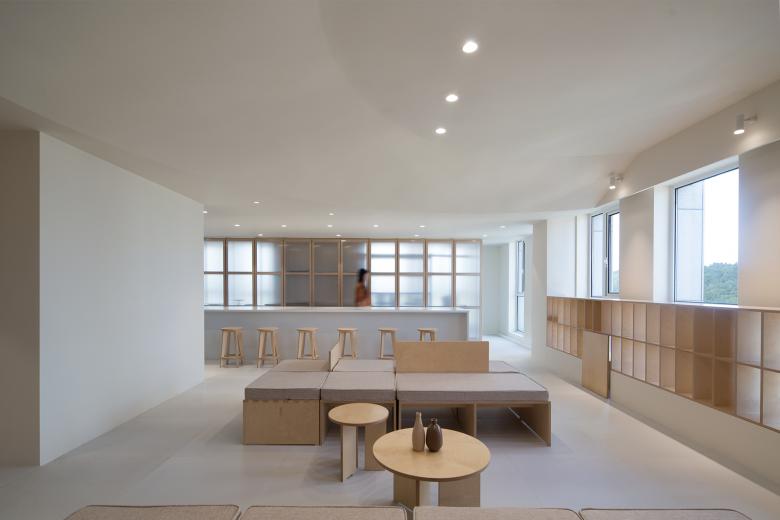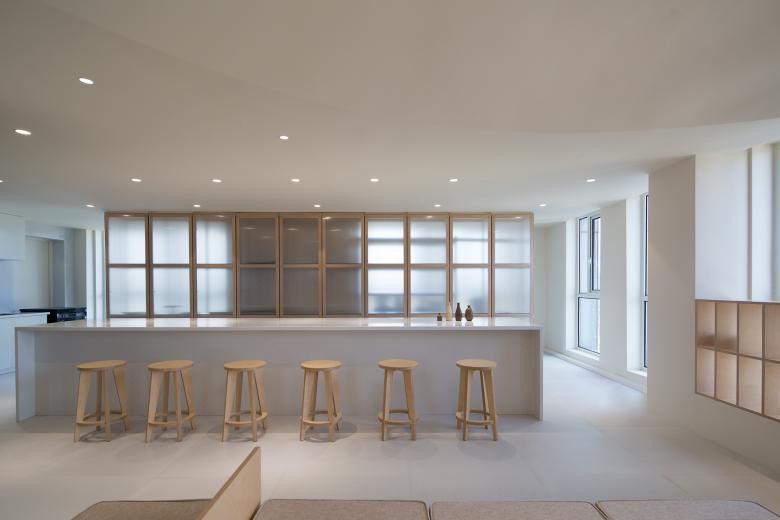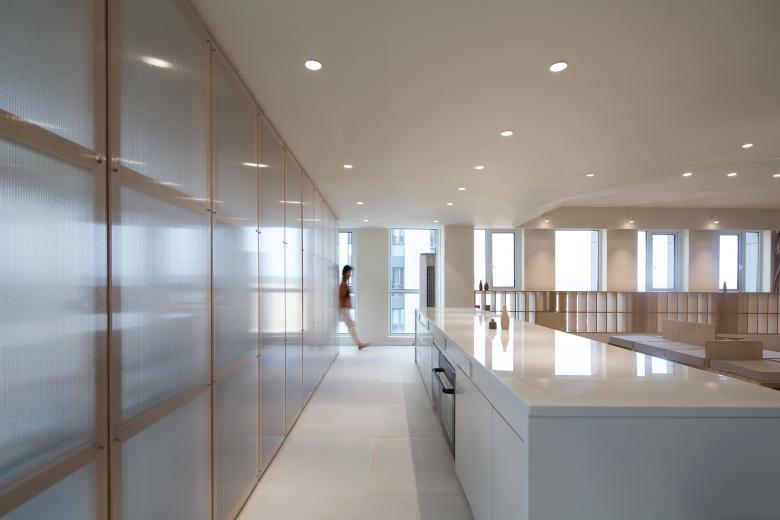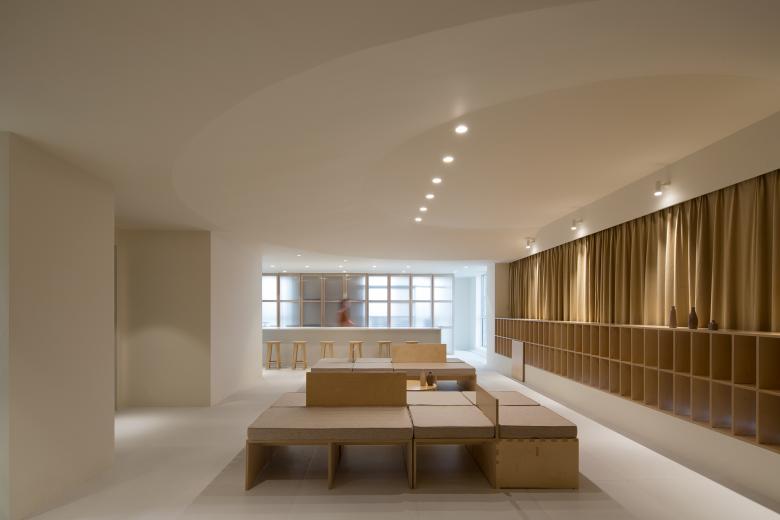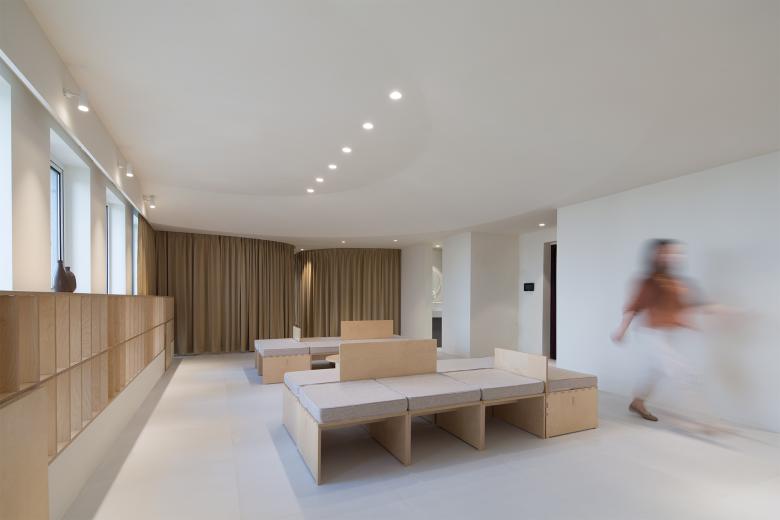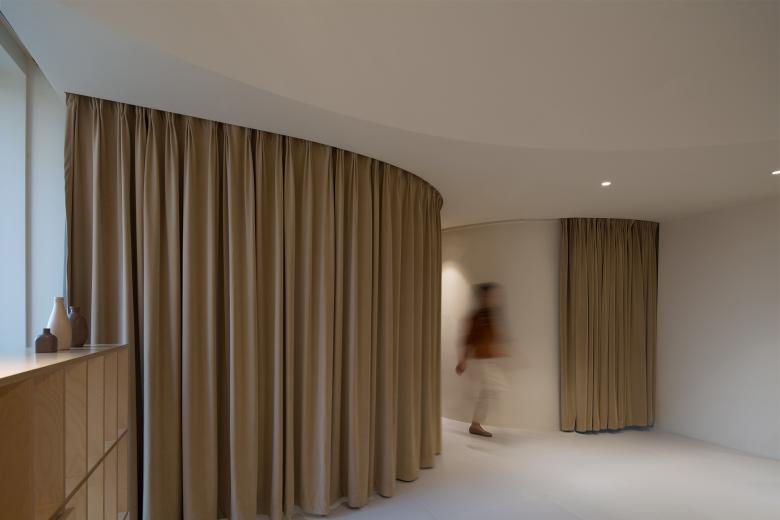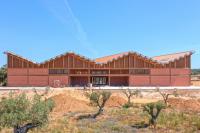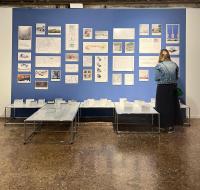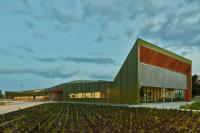Womb Baking Studio
Zheijang, China
Atelier d’More was commissioned by Womb Baking studio to design a space for women that incorporates baking and parenting activities. Founder Hong started up the baking studio to give babies healthy desserts made by their mothers, after meeting the growing number of mothers who came to learn and share, Hong felt they needed a place where they could settle their interests and children, therefore the Womb studio was formed.
All functional areas are distributed in the space in an open form, and each area is independent but visually connected to meet the needs of parents and children to maintain communication in different areas. We minimised the use of doors and walls, using soft curtains as movable partitions which surround the children’s nap room in a shape of womb to create the safest place the children may have ever been. The narrowing of the entrance of the nap room replaces the function of the door in an invisible way. The extension from the ceiling along the arc track is like umbilical cord connecting the children inside the nap room and the mother outside the nap room, creating a sense of security between parents and children both visually and psychologically.
The cream-like ceiling which blurs the boundaries at both ends, wraps the beams in a well-churned batter. The caramel-colored curtain, the cream-textured ceiling, and the wafer biscuit like wooden boards are all gentle and delicious temptations for sight, as if the whole space is baked.
Atelier d’More is committed to design and explore sustainable and easy-assembling prefabricated woodwork, deconstructing traditional mortise and tenon techniques with modern techniques and expressions. The tightly stitched tenon joints are exposed on the woodwork, illustrating their functionality and aesthetics. In this project, we practiced the low-carbon assembly series of wood, adding modular design to achieve efficiency and variability. The chairs are composed of three different modules, which can be transformed into a variety of forms according to requirements to meet the use of different scenarios. 90% of the woodwork is prefabricated, so the woodworker only needs to assemble and reinforce the prefabricated components on site, which greatly reduced on-site cutting work, dust pollution and material waste. In the future, even at the end of the project's life, the furniture could be disassembled and transported to another place where it is needed, and reassembled to extend their lives. This is also our original intention of designing unique furniture for our projects, we believe that the furniture is not independent unit, but cells growing from the space, integrating with the space and growing over time, playing their value continually.
